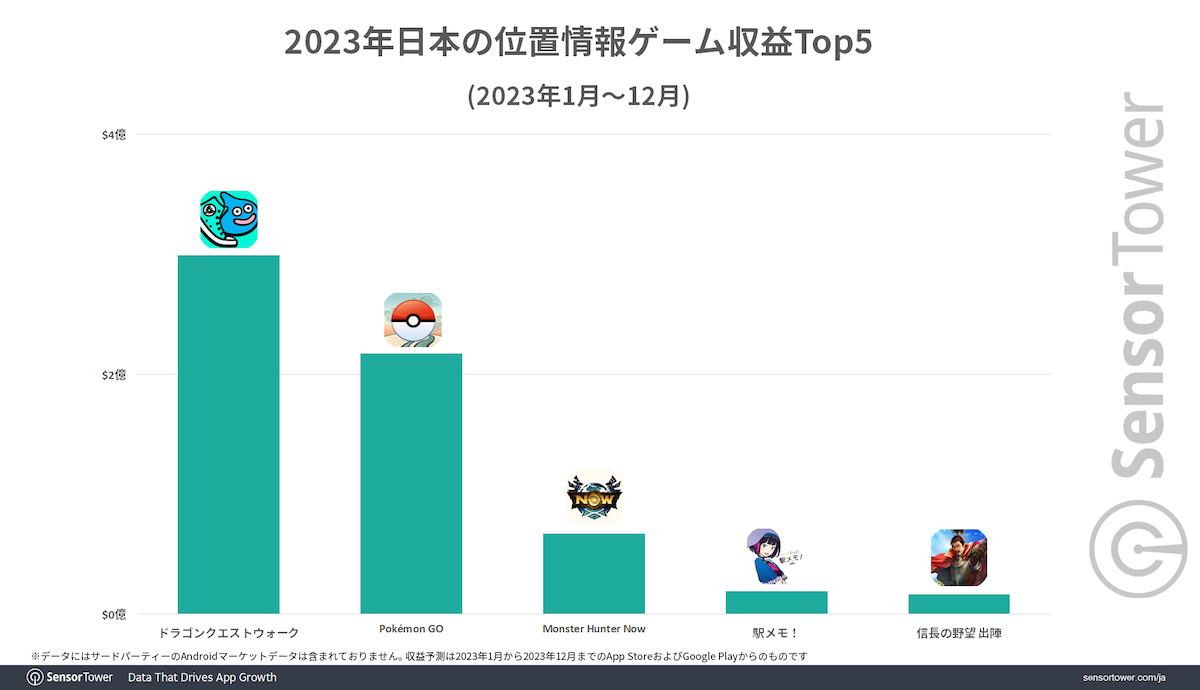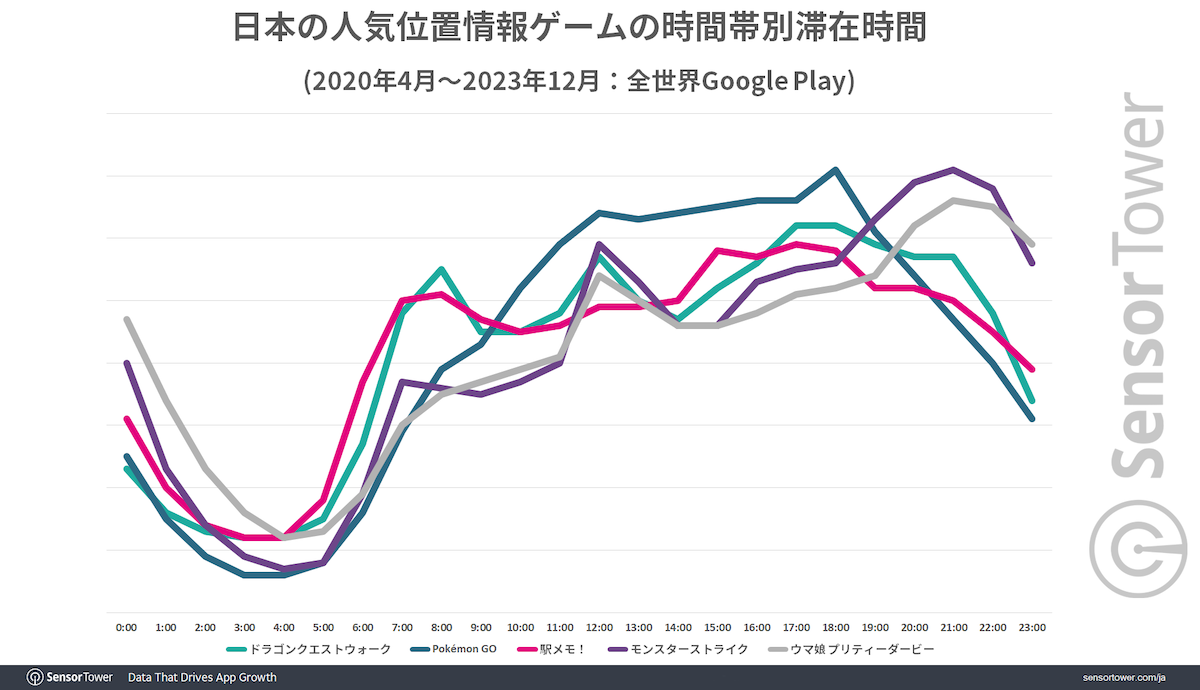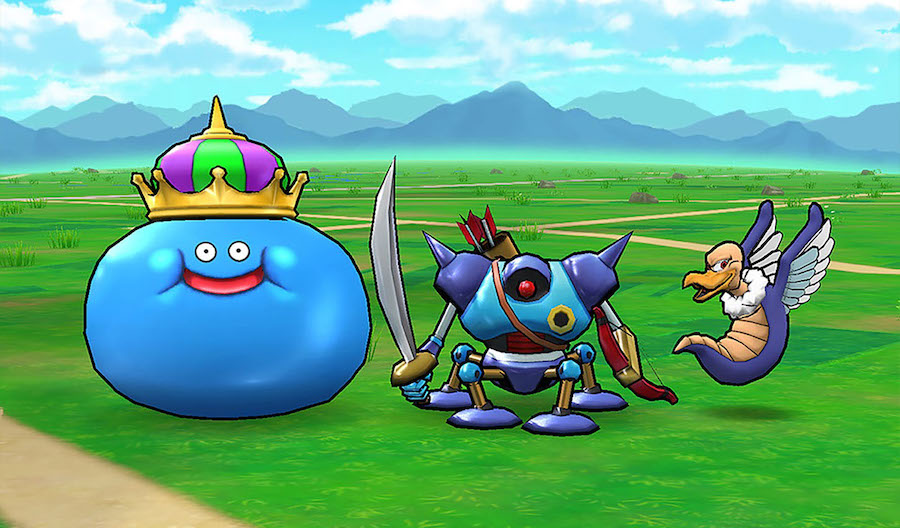Mobile games that use the player’s real-life location are highly popular in Japan. Recent data from Sensor Tower Japan covering January to December 2023 reveals that Japan is the largest and most profitable market for this type of game, accounting for almost exactly half the global market with revenues exceeding $600 million USD.

Mobile games of this type are collectively called geolocation-based games or sometimes Augmented Reality (AR) location-based games. Launched in 2016, Pokémon Go has remained the most popular mobile game in this genre in various countries around the globe- consistently being one of the top ten grossing iPhone games in the USA, UK, and Japan. However, Sensor Tower’s data on geolocation-based game performance for the Japanese market in 2023 reveals that Dragon Quest Walk’s profits knocked Pokémon Go off the top spot. The Square Enix geolocation-based RPG was initially released in 2019, and generated $300 million USD in revenue from the Japanese market in 2023.

But why are geolocation-based games so popular in Japan in the first place? Many Japanese employees and students have long train and walk-based commutes, meaning that these games provide a fun past-time to fill these daily routines. Some location-based games really tap into this lifestyle, such as Ekimemo- Station Memories, which features over 9000 real-life Japanese train stations. This game allows players to collect anthropomorphized anime characters that represent each station, allowing people to gamify their train journeys.
The typical time of day during which location-based games are played also supports this theory. According to Sensor Tower’s data, people tend to play these games during the day, with 6pm being the peak time. This suggests that people are playing during commutes and breaks. After 9pm, use of geolocation-based mobile games drops. Conversely, player activity on other types of mobile game tends to increase after 9pm- suggesting people switch genres when they get home.

Another likely reason for the genre’s popularity in Japan is that the top three games of this type (Dragon Quest Walk, Pokémon Go and Monster Hunter Now) use existing Japanese game IPs that already have well-established fanbases in the country. While Monster Hunter and Dragon Quest have smaller dedicated fanbases outside Japan, Pokémon has attained a lot of international brand recognition thanks to the popularity of its game and anime localizations since the 1990s. This might explain why Pokémon Go is the most popular of the three geolocation-based mobile titles overseas.





